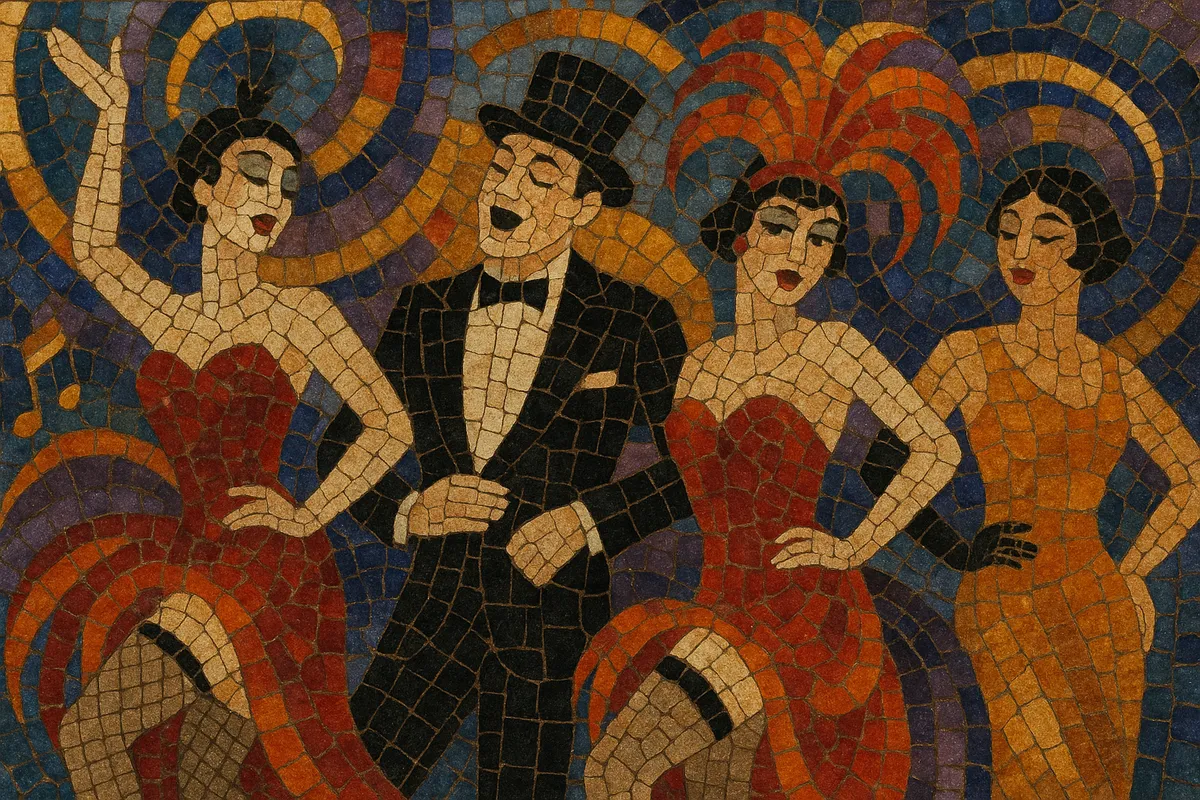A revue is a plot-light, multi-act stage entertainment that strings together songs, dances, comedy sketches, and specialty acts around a loose theme or topical satire.
Unlike a book musical, a revue prioritizes spectacle and variety over narrative, showcasing chorus lines, star turns, witty patter songs, and lavish costumes and sets. Its musical numbers often reflect popular styles of their day (e.g., Tin Pan Alley, jazz age foxtrots) and can be easily excerpted as standalone songs.
Revue emerged in late-19th-century Paris as satirical year-end entertainments that "reviewed" the events of the season. Parisian houses such as the Folies Bergère and the Moulin Rouge established the template: glamorous chorus lines, star comedians, topical skits, and songs that could live outside the show.
The format spread to London and New York, where impresarios refined it into high-gloss commercial entertainment. In the United States, producers like Florenz Ziegfeld (Ziegfeld Follies) and George White (George White’s Scandals) elevated the revue with opulent design and contributions from leading songwriters (Irving Berlin, George Gershwin, Cole Porter). In London, Noël Coward’s urbane revues helped define the witty, sophisticated tone of the genre.
With the arrival of synchronized sound, Hollywood translated the stage revue into early sound films (e.g., all-star "revue pictures" of 1929–1930). These preserved the genre’s variety format—song compilations, comic bits, and production numbers—while expanding visual spectacle through cinematic technique.
After the 1930s, narrative book musicals increasingly dominated commercial theatre, but the revue’s DNA endured: star-driven numbers, concept-driven compilations, and topical satire remained staples of stages and television variety. Modern revues persist as composer or era tributes, political satire shows, and cabaret-style compilations, and they continue to inform musical theatre songwriting and the culture of "show tunes."
Start with a unifying theme (seasonal review, social satire, a composer tribute, or a city/nightlife mood) rather than a plot. Build a sequence of self-contained numbers that contrast pacing, texture, and tone.


